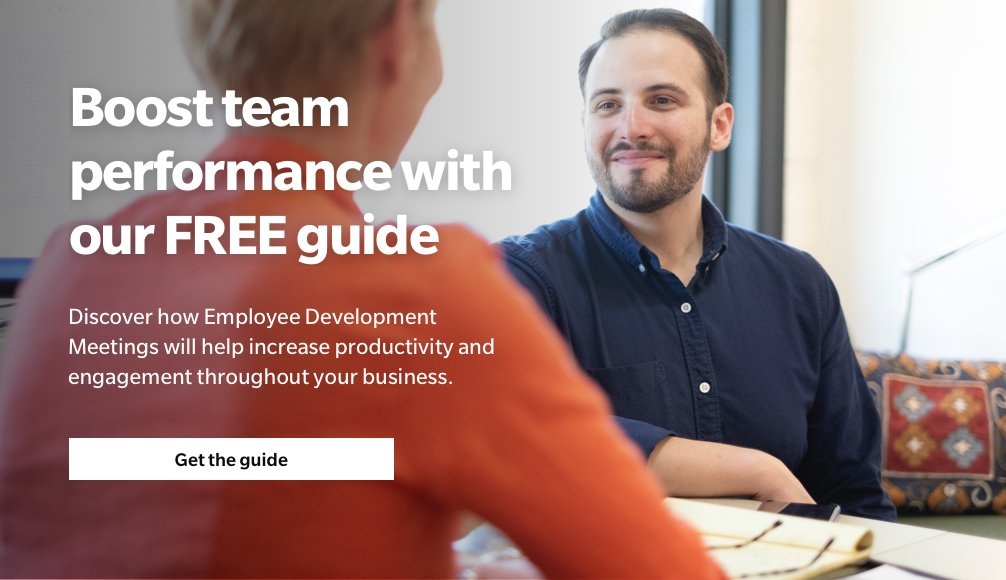As a business owner, you’ve likely never experienced a year like 2020. The challenges have been complex and unfamiliar. And to keep business running, you’ve needed to confront each one head on. So has your team. While you’ve been focused on how to pivot, generate revenue, manage a remote team, and balance work and life in face of the COVID outbreak, your employees have taken a reactive stance to your every decision, which is a vulnerable and uncomfortable place to be.
With no clear end to the pandemic in sight, we’re all buckling down for a continued period of disruption, creating an effect that experts at Korn Ferry are calling “the second burnout.”
According to one recent survey, nearly six in 10 employees reported feeling burned-out last month, compared to 45% in April. Moreover, as it becomes clear that the pandemic isn’t going away anytime soon, more employees are blaming the virus for their burnout, citing it as responsible for increased workloads, lack of support, and unclear performance expectations.
Mark Roger, PhD, Senior Director & George Atkinson, Senior Client Partner, Korn Ferry
We’ve certainly heard echoes of this strain from our clients. Many business owners feel like their employees are underperforming, absent, distracted—and lost on how to improve their productivity. And though it may feel counterintuitive, if you want your business to continue to succeed throughout this crisis, you need to prioritize the mental health and wellness of your employees. Here are some ways our clients are doing this:
Recognize their resilience
The last six months have challenged everyone. And even if you haven’t necessarily seen it, many of your employees have shown strength through this period that goes beyond the day-to-day norm. Maybe they’ve taken over a project, role or additional shift to support another team member. Maybe they’ve made big changes in their life to still be able to show up to work. Many have quietly stepped up without drawing any attention to the fact that they’re doing it, and it’s critical to recognize their efforts in a way that supports and highlights how exceptional that is. So at a minimum, host regular weekly or monthly all-team meetings to call out and appreciate their efforts to stay focused and committed—even if not all your employees are showing up in the same way—and recognize the true impact of how it may be affecting them.
Schedule regular check-ins
If you (or your managers) don’t already conduct weekly Employee Development Meetings with reporting employees, now’s the time to start. A recurring one-on-one meeting not only gives your employees a predictable touchpoint to discuss their wins, questions, concerns, blocks and requests—it also gives you an opportunity to really assess their current state and challenge any assumptions you may be making about them. At EMyth, we use 15five as a tool to manage employee performance and engagement, as well as produce a framework for our weekly meetings.
Advocate self-care
Though overarching symptoms of burnout (like anxiety and depression) are universal, everyone manages them differently. For example, during the recent wildfires, our Senior Project Manager Christy Miller shared, “A part of me wanted to take a week off and sleep, and the other part wanted to be busy.” In the midst of crisis or challenge, some people need rest while others need the distraction of work, so don’t apply the same definition to everyone. In your Employee Development Meeting, ask, “Can I do anything for you?” and, “What do you need to take care of yourself?” Because if they aren’t caring for themselves, the people and systems in your business that rely on them will suffer.
Prepare and share a forward-thinking crisis plan
What if your company experienced another pandemic-level crisis—would you handle it the same way? Do you know how you’d change and pivot? Answering these questions for yourself and your team will calm anxiety, spread confidence and fuel productivity. So, how do you do this?
Start by taking out your Crisis Management plan if you did one (and if not, get started). As you review it, think about how the plan you created has worked up to this moment. Use this to create a “bare minimum plan” that you could truly use for a future crisis. Don’t overcomplicate it. Start by recognizing the non-negotiables first—such as employee retention and generating revenue—and then adding goals or resources that could be put on hold or cut.
Remember, you don’t need to create this in a bubble. To stoke confidence and see genuine buy-in from your team, let them contribute to the plan. It can be incredibly powerful for everyone in the company to share what they would do differently or what they would keep the same in their own role and department. Having a company planning session lets you say, “I’ve learned a lot through this experience and now I need your expertise.” And it gives each employee an onus on their role and the chance to share their ideas.
Reframe your perspective on remote work
Even after six months, many business owners are still struggling with the remoteness of their employees, feeling the need to "see" people actually working to believe it. And this simply isn’t possible. Temporarily gone is the opportunity to stop by an employee’s workplace and check in. So if you tend toward a micromanaging leadership style, you have to rethink how you get the assurances you need to be satisfied that your team is performing.
Ultimately, this is a test of having systems that can work for you. The remote-work environment leans heavily on results-driven benchmarks versus time on the clock, so the best way to reliably track employee results from afar is to first document their expected results. You need a structure for outcomes and deliverables, which starts by creating a Position Agreement. With a results-based agreement in place, each employee will know what they're responsible for and by when. That way, you’ll have what you need to track progress and develop trust in them (maybe for the first time!).
The best way to ensure the success of your business through the discomfort of this moment is by supporting your employees. I guarantee that if you meet them where they are, you’ll see them rise up and engage more genuinely with their work.
How are you acknowledging the moment and supporting your employees? Share your story in the comments below.




Comments